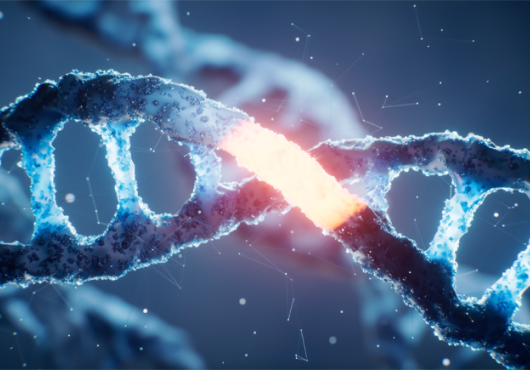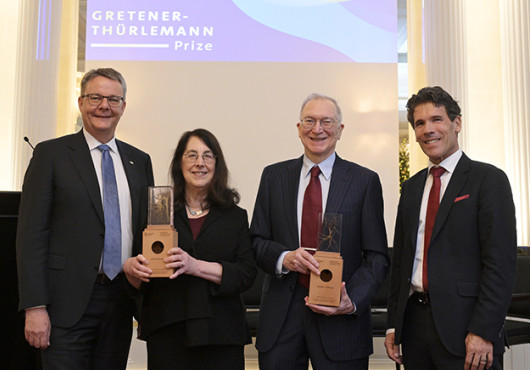Aha! That click of understanding, that dawn of comprehension, that flash of insight. It is one of the more satisfying moments in the long, slow process of learning something new. Suddenly, scattered bits and puzzling pieces of information coalesce into a familiar pattern. Connection made. Problem solved. Illness diagnosed.
Not so fast, said David Perkins. If people are not careful, the compelling click of closure can be a powerful illusion that disengages a crucial mental checkpoint necessary to catch errors in critical thinking. For doctors in training, that may translate into errors in diagnosis and treatment.
Research on competence in both everyday matters and professional practice reveals that two cognitive resources work together in making good critical judgments, Perkins told an audience of more than 160 educators and mentors. He was speaking at a May 9 symposium, “Science of Learning: The Challenge of Critical Thinking in Medical Education,” sponsored by the HMS Academy Center for Teaching and Learning. The symposium is archived at http://hms.harvard.edu/org/actl.
Expert thinking in medicine and other fields relies heavily on the rapid pattern recognition and quick intuitive assembly of information, which Perkins, senior professor of education at the Harvard Graduate School of Education, calls fast cognition. But it also requires a complementary analytical process, slow cognition, to search for anomalies and scan for evidential weaknesses and counter evidence.
“When we think we’ve made sense of a situation, we tend to proceed happily according to the theory we have at that moment,” Perkins said. “That’s not bad: 90 to 95 percent of the time, we’re probably right. The other times we may be deeply wrong.” Fortunately, the practice of thinking twice can be taught, Perkins said. His prescription: learn about troublesome cognitive illusions; cultivate deliberate critical patterns; foster after-action reviews of thinking.
“Seasoned docs know a lot without being sure how they know it,” said symposium moderator Steven Schlozman, HMS assistant professor of psychiatry at Massachusetts General Hospital. “We can help our students appreciate both the magic of the intuition that seasoned doctors employ and, at the same time, appreciate that the best of the seasoned docs are working on parallel tracks—thinking slowly and quickly.”
Neuroscience offers insights into how the brain adds and retrieves knowledge, said Edwin Furshpan, the Robert Henry Pfeiffer professor emeritus of neurobiology at HMS. Learning something new produces chemical changes in the brain. The existing neurons and networks that represent particular objects, events, abstractions, and instructions are not hardwired, but modifiable.
Knowledge grows in our brains the way it does in a field of study, he said, with new facts or ideas related to familiar ones slotted into the framework and associated with existing neuronal networks. “The more we know, the easier it may be to learn more,” he said. “We work by comparisons and contrasts.”
The Long and Short of Learning
Stay Up to Date
© 2025 by The President and Fellows of Harvard College


